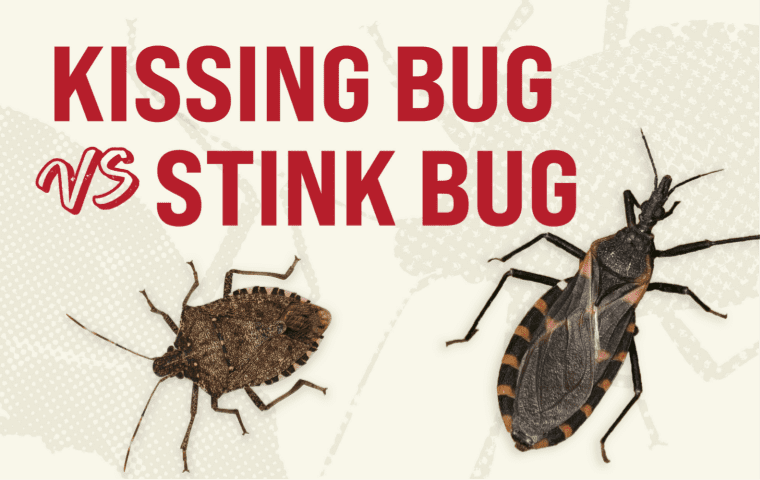The “Kissing Bug” Has Come Knockin’ in Mississippi

(Yes, this is why pest control isn’t just about termites and roaches anymore.)
It started as just another humid night in the Pine Belt. A homeowner in Mississippi wakes, maybe hears a skish-skish near the window frame. Nothing dramatic—until lab results drop. Suddenly, this quiet night becomes historic: Mississippi’s first confirmed locally acquired case of Chagas disease by the triatomine “kissing bug.” With this, the seemingly exotic becomes alarmingly local.
That report first broke in The Clarion Ledger in September 2025, with headlines like “Can you catch Chagas in Mississippi?” and “What to know as CDC warns of ‘kissing bug’ disease spread.” Clarion Ledger
For Havard Pest Control, this is more than breaking news—it’s a new frontier in how we protect your home, your property, and your peace of mind.
HOW THE KISSING BUG WENT FROM MYTH TO MISSISSIPPI
If you’ve heard of a “kissing bug,” you probably thought of faraway jungles or dangerous travel destinations. But the truth: these little critters have been lurking closer than many realize.
- The bug—scientific name Triatominae—feeds at night, often near the face or lips, then defecates. In the feces, the parasite Trypanosoma cruzi can enter the body via the bite wound, mucous membranes, or breaks in the skin.
- The Mississippi State Department of Health notes that while Chagas disease is more common in Latin America, triatomine bugs do exist in the U.S. and can spread the parasite via bite + contaminated feces. msdh.ms.gov
- In the United States, infection is also possible via blood transfusion, organ transplants, or from mother to child—though those pathways are rare. msdh.ms.gov
Before this case, many in our region considered Chagas a remote concern. Now, the map is changing.
WHAT TO WATCH FOR (Because You Don’t Wait for Drama)
You won’t necessarily see a full-blown bug ambush. Many cases fly under the radar. But here are telltale signs:
- Subtle symptoms: low fever, fatigue, body aches, rash, or swelling (particularly eyelid swelling, aka Romaña’s sign).
- Cardiac red flags: irregular heartbeat, unexplained enlargement, heart failure—especially when doctors can’t pin down a cause.
- Digestive symptoms: trouble swallowing, chronic constipation, or bloating (in rare, chronic cases).
- A bite or bug sighting: someone spots a nocturnal bug creeping on a wall or bedframe—especially near the head or face.
If you or a family member experiences these (especially in rural or older homes), it’s worth a conversation with your physician about Chagas—even if it seems unlikely.
IF YOU SUSPECT AN INFECTION—STEP BY STEP (Don’t Wait!)
- Talk to your doctor — mention Chagas or T. cruzi.
- Request blood testing — confirm or rule out infection.
- If positive, request treatment access — in the U.S., treatment isn’t always easy to obtain.
- Consult an infectious disease specialist, a tropical medicine expert, or a referral network that handles “rare parasite” cases.
- Notify local health departments — public health agencies need to track these cases to identify the spread and issue alerts.
- House = your castle. Bugs don’t respect drywall, but they love cracks, holes, and gaps.
- Seal wall cracks, crevices, and gaps under siding and around pipes.
- Weather-strip doors and windows.
- Use fine mesh screens (especially on windows you open at night).
- Inspect & reduce clutter, leaf litter, rock piles, woodpiles — ideal hiding spots for kissing bugs.
Early diagnosis and treatment are crucial. Once damage to the heart or digestive system progresses, it becomes harder to reverse.
WHAT TO DO NOW — BEFORE THE MOSQUITOES (AND KISSING BUGS) CAN RUIN THE PARTY
We like to think of ourselves not just as “bug terminators,” but as guardians of your home and health. Here’s how Havard recommends acting—and acting fast.
1. FORTIFY THE FORTRESS
2. LIGHT LESS, ATTRACT LESS
Lights attract insects—including bugs that may carry diseases. Use motion or low-intensity lighting, and avoid keeping outdoor lights on overnight.
3. INSECTICIDAL TOOLS (HANDLED WISELY)
We’re pest pros, and yes, we use insecticides strategically. Around foundation cracks, around openings, in crawlspaces, and with materials safe for humans and pets. Let us evaluate occupancy, safety, callbacks, and local codes.
4. PROTECT PETS & LIVESTOCK
Dogs, chickens, barn cats—they’re part of your family. Clean their shelters, seal cracks, avoid letting feed bowls remain outdoors overnight, and use structural protections.
5. MONITORING & INSPECTION
We recommend periodic inspections, especially if your property is older, rural, or near thick vegetation. Many bugs arrive quietly. Early detection is powerful.
At Havard Pest Control, we believe that pest control must evolve as fast as pests evolve. Our story of the “kissing bug” is a reminder: in the battle for healthy homes, the stakes are higher than just bitten skin. It’s about protecting lives, investments, and peace of mind. If you have questions, we’re standing by to take your call.
(800) 898-0264
[CONTACT US]
Curious to learn more? Read the original Clarion Ledger report: “Can you catch Chagas in Mississippi? What to know as CDC warns of ‘kissing bug’ disease spread.”
GET A FREE INSPECTION
Say Goodbye To Pests For Good
Since 1947, Havard Pest Control has been protecting homes and businesses from unwanted pests. With decades of experience, we don’t just eliminate pests—we keep them from coming back. Trust our expert team to provide safe, effective, and long-lasting solutions for your peace of mind.







